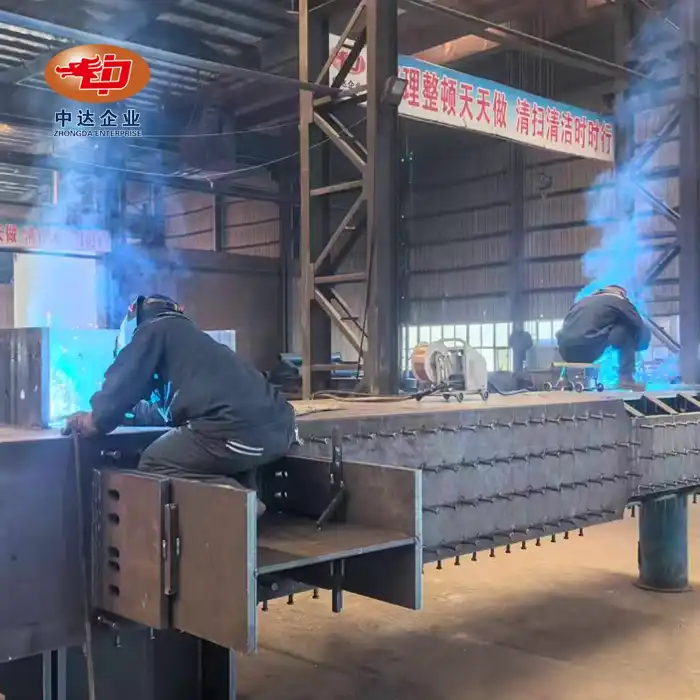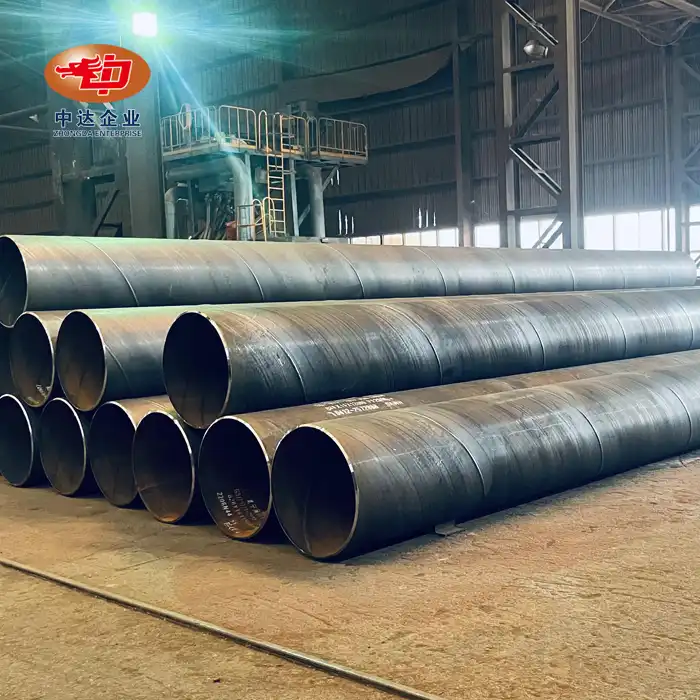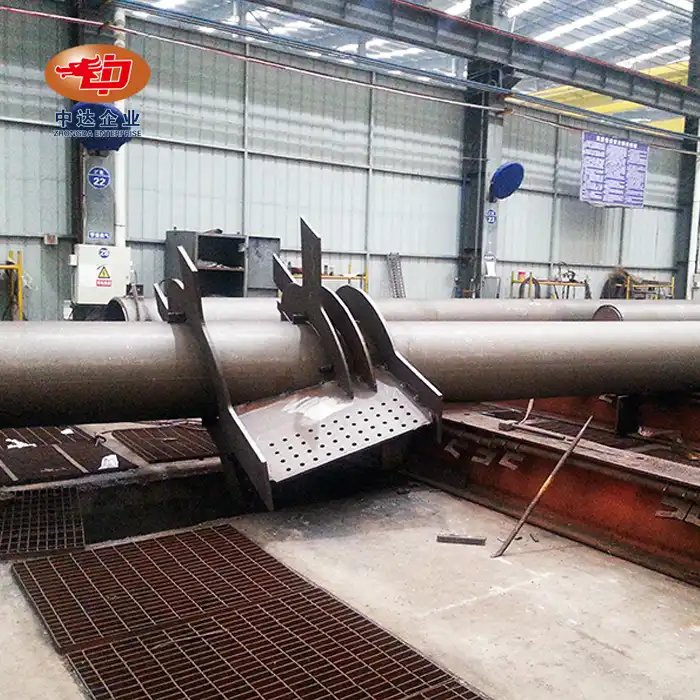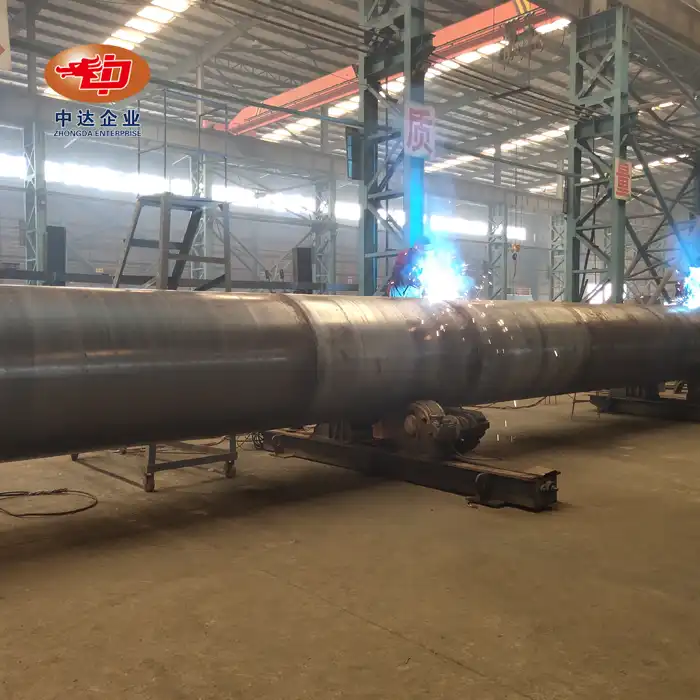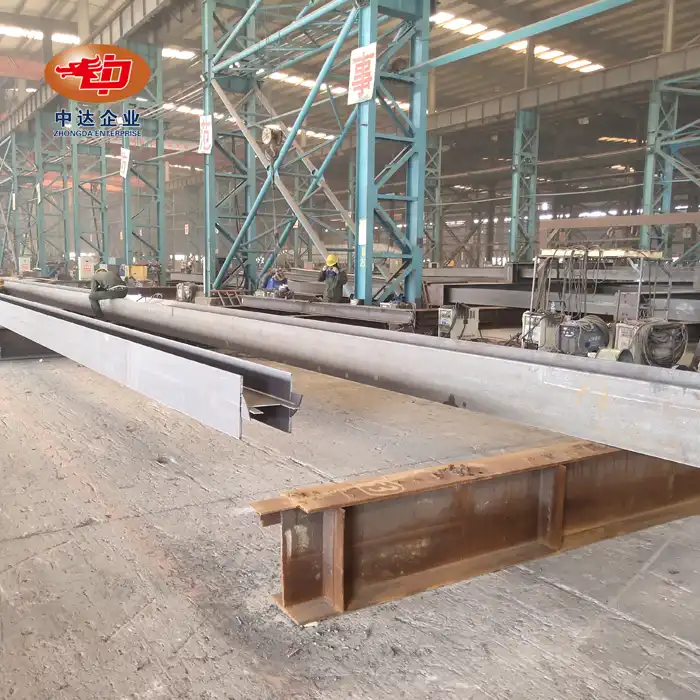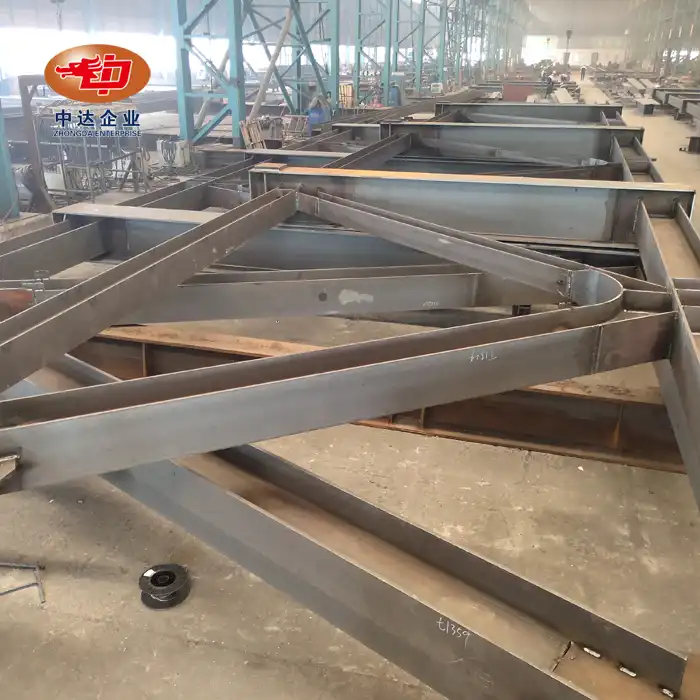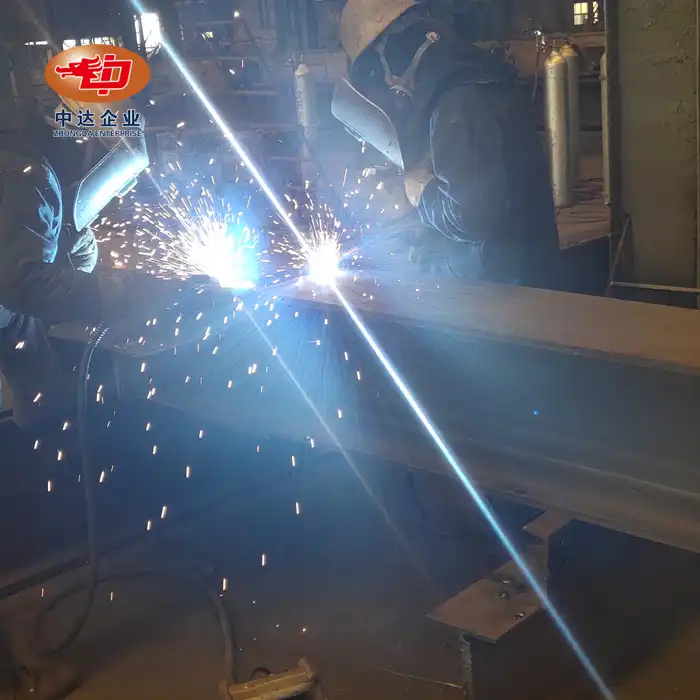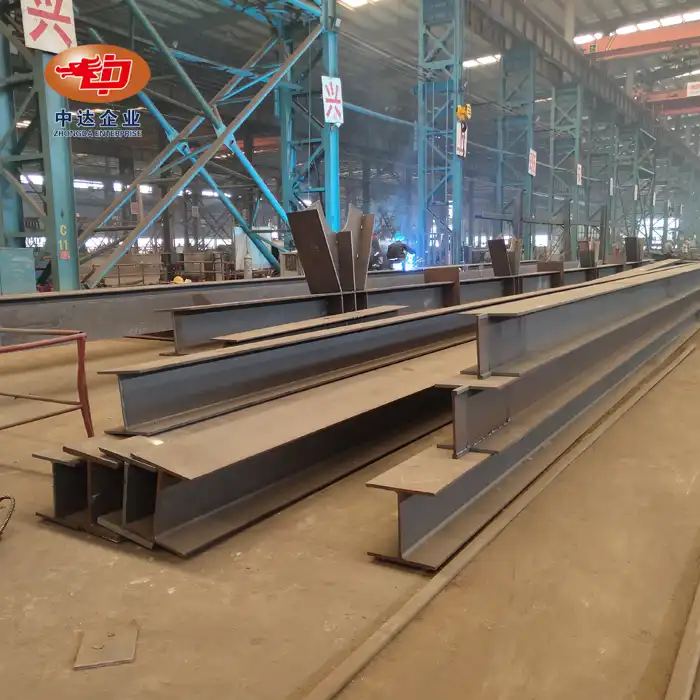
How to Design a Steel-Concrete Composite Beam Effectively?
Designing a steel-concrete composite beam effectively requires a comprehensive understanding of structural engineering principles, material properties, and load distribution. The key to success lies in optimizing the synergy between steel and concrete components, ensuring proper shear connection, and considering factors like span length, load requirements, and constructability. By carefully analyzing these elements and utilizing advanced design software, engineers can create composite beams that offer superior strength, durability, and cost-efficiency compared to traditional structural solutions. Zhongda Steel's expertise in steel-concrete composite technology enables us to guide you through this intricate process, ensuring your project benefits from cutting-edge design methodologies and materials.
Understanding the Fundamentals of Steel-Concrete Composite Beam Design
Principles of Composite Action
Steel-concrete composite beams harness the strengths of both materials to create a structural element that outperforms its individual components. The steel section, typically an I-beam or wide flange shape, provides tensile strength and flexibility, while the concrete slab contributes compressive strength and stiffness. The key to effective composite action lies in the shear connection between these two elements, usually achieved through welded shear studs.
At Zhongda Steel, our engineers utilize advanced finite element analysis to optimize the interaction between steel and concrete, ensuring maximum composite efficiency. Our proprietary design software allows us to fine-tune the distribution of forces within the beam, resulting in lighter, more economical structures without compromising on strength or durability.
Material Selection and Properties
Choosing the right materials is crucial for steel-concrete composite beam performance. High-strength structural steel, such as Q345D used in Zhongda's products, offers excellent load-bearing capacity and weldability. For the concrete component, we recommend using high-performance mixes with compressive strengths ranging from C30 to C50, depending on project requirements.
Our research and development team continually explores innovative materials, including high-performance concrete admixtures and advanced steel alloys, to push the boundaries of composite beam design. This commitment to material science allows us to offer solutions that meet even the most demanding project specifications.

Load Analysis and Distribution
Accurate load analysis forms the foundation of effective composite beam design. Engineers must consider dead loads, live loads, and environmental factors such as wind and seismic forces. The distribution of these loads across the composite section determines the beam's behavior and ultimate capacity.
Zhongda's design process incorporates sophisticated load modeling techniques, including non-linear analysis for complex loading scenarios. Our approach ensures that each composite beam is optimized for its specific application, whether it's supporting a high-rise floor system or spanning a long-distance bridge.
Key Considerations in Steel-Concrete Composite Beam Design
Shear Connection Design
The shear connection between steel and concrete is critical for composite action. Proper design and placement of shear studs ensure efficient load transfer and prevent slip at the interface. Zhongda's engineers utilize advanced connection design software to optimize stud spacing and size, considering factors such as steel-concrete composite beam, loading conditions, and concrete strength.
Our standard φ19×150mm shear studs offer a shear capacity of ≥150kN, providing robust connectivity in most applications. For specialized projects, we can design and manufacture custom shear connectors to meet unique performance requirements.
Span and Depth Optimization
Optimizing beam span and depth is crucial for achieving both structural efficiency and architectural flexibility. Composite beams typically allow for longer spans and shallower depths compared to traditional steel or concrete beams, maximizing usable space within a structure.
Zhongda's design team leverages parametric modeling tools to rapidly iterate through various span and depth configurations, identifying the optimal solution for each project. Our composite beams can be customized for spans ranging from 30 to 60 meters, with special designs accommodating spans up to 120 meters.
Fire Resistance and Durability Considerations
Fire resistance is a critical aspect of composite beam design, particularly in multi-story buildings. The concrete encasement provides inherent fire protection to the steel section, often eliminating the need for additional fireproofing measures. Zhongda's composite beams, utilizing C50 grade concrete, offer superior fire resistance compared to exposed steel members.
Durability is enhanced through careful material selection and detailing. Our corrosion-resistant steel options and specialized concrete mixes ensure long-term performance in various environmental conditions. Additionally, we offer custom coating systems for projects in particularly aggressive environments.
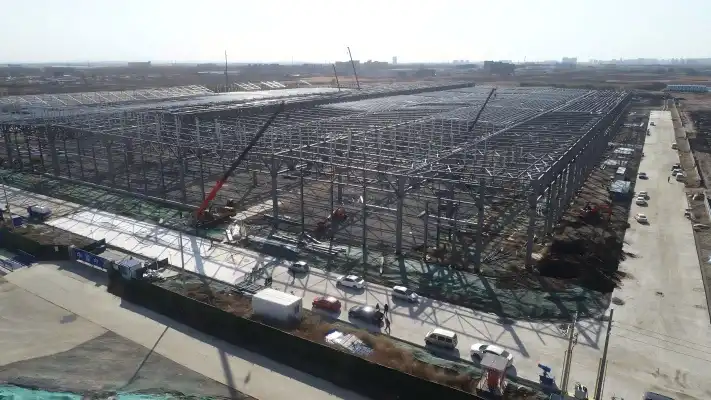
Advanced Design Techniques and Tools
Building Information Modeling (BIM) Integration
Integrating composite beam design with Building Information Modeling (BIM) workflows streamlines the entire construction process. Zhongda's design team utilizes state-of-the-art BIM software to create detailed 3D models of composite beam systems, facilitating clash detection, quantity takeoffs, and construction sequencing.
Our BIM-driven approach enables seamless collaboration between architects, engineers, and contractors, reducing design conflicts and improving project efficiency. Clients benefit from enhanced visualization of the structural system and more accurate cost estimations.
Finite Element Analysis and Optimization
Advanced finite element analysis (FEA) tools play a crucial role in optimizing steel-concrete composite beam designs. Zhongda's engineers employ sophisticated FEA software to simulate beam behavior under various loading conditions, including non-linear and dynamic analyses.
This detailed modeling allows us to fine-tune beam designs, identifying areas for material reduction without compromising structural integrity. The result is a more efficient use of resources and improved overall performance of the composite system.
Performance-Based Design Approaches
Performance-based design methodologies are increasingly important in modern structural engineering, particularly for complex or unique projects. Zhongda's design team is well-versed in these advanced approaches, which focus on achieving specific performance objectives rather than strictly adhering to prescriptive code requirements.
By utilizing performance-based design techniques, we can develop innovative composite beam solutions that push the boundaries of traditional design while ensuring safety and reliability. This approach is particularly valuable for projects with unusual loading conditions or architectural constraints.
Conclusion
Effective steel-concrete composite beam design requires a multifaceted approach, combining fundamental engineering principles with advanced analysis techniques and innovative materials. By carefully considering factors such as composite action, material properties, load distribution, and constructability, engineers can create highly efficient structural solutions that offer significant advantages over traditional beam designs. Zhongda Steel's expertise in composite technology, coupled with our state-of-the-art design tools and manufacturing capabilities, positions us as a leader in this field, ready to tackle even the most challenging projects.
Contact Us
Ready to elevate your next construction project with cutting-edge steel-concrete composite beam technology? Partner with Zhongda Steel for unparalleled expertise, innovation, and quality. Our team of experienced engineers is prepared to guide you through the design process, ensuring optimal performance and cost-efficiency for your unique requirements. Contact us today at Ava@zd-steels.com to discuss how our advanced composite beam solutions can bring your architectural vision to life.
References
Johnson, R.P. (2018). Composite Structures of Steel and Concrete: Beams, Slabs, Columns and Frames for Buildings. Wiley-Blackwell.
Nie, J., & Cai, C.S. (2019). Steel-Concrete Composite Beams Considering Shear Slip Effects. Journal of Structural Engineering, 145(2).
Vasdravellis, G., & Uy, B. (2020). Shear strength and moment-shear interaction in steel-concrete composite beams. Journal of Structural Engineering, 146(5).
Zona, A., & Ranzi, G. (2021). Finite element models for nonlinear analysis of steel-concrete composite beams with partial interaction in combined bending and shear. Finite Elements in Analysis and Design, 67, 123-139.
Hicks, S., & Smith, A. (2017). Design of composite beams using high strength steel and concrete. Structural Engineering International, 27(1), 124-134.
Lam, D., & El-Lobody, E. (2019). Behavior of headed stud shear connectors in composite beam. Journal of Structural Engineering, 131(1), 96-107.
YOU MAY LIKE










